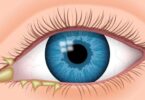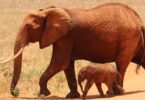Insect questions and answers:
Which of the following is not an insect?
(a) Cockroach
(b) Tick
(c) Beetle
(d) Wasp
Which disease is spread by Housefly?
(a) Dengue fever
(b) Encephalitis
(c) Filariasis
(d) Gangrene
Which of these is a type of moth?
(a) Starling
(b) Codling
(c) Kipling
(d) Fiddling
The fertile female honey bee is called
(a) Worker
(b) King
(c) Queen
(d) Drone
Set of useful insects is
(a) Wasp, Anopheles and Bed Bug
(b) Bed Bug, Silk Moth and Anopheles
(c) Honey Bee, Bed Bug and Locust
(d) Cochineal Insect, Lac Insect and Honey Bee
Housefly feeds on sugar by
(a) Crushing its crystals and then sucking the power
(b) Crushing and eating
(c) Sucking
(d) Dissolving in saliva and sucking
Related: Meiosis quiz questions
A moth is closely related to
(a) Butterfly
(b) Cricket
(c) Beetle
(d) Wasp
Common feature between house fly and honey bee is
(a) Head
(b) Mouthparts
(c) Abdomen
(d) Three pairs of jointed legs
Honey is
(a) Nectar stored in the honey sac
(b) Nectar and water sucked by the honey bee
(c) Nectar mixed with saliva and stored in honey sac
(d) Nectar of flower
Universal character of insect is
(a) Two pair of wings
(b) Compound eyes
(c) Three pair of legs
(d) Both (b) and (c)
The process of conversion of a small cockroach into an adult cockroach is called as
(a) Moulting
(b) Metamorphosis
(c) Ecdysis
(d) Transformation
Related: protein synthesis quiz answers
Housefly transmits all the diseases except
(a) Cholera
(b) Dysentery
(c) Yellow fever
(d) Typhoid
Insects are
(a) Amminotelic
(b) Ammonotelic
(c) Ureotelic
(d) Uricotelic
The insect that is not found in the wild state is
(a) Lac insect
(b) Honey bee
(c) Silk moth
(d) Cochineal insect
Insects have blood which
(a) Resembles human blood in colour
(b) Circulates through arteries and veins
(c) Circulates through an open system
(d) Has haemoglobin in the cells
An insect differes from spider in having
(a) 3 pairs of legs and 2 pairs of wings instead of 4 pairs of legs and no wings
(b) 3 pairs of legs and 2 pairs of wings instead of 3 pairs of legs and no wings
(c) 3 pairs of legs and no wings instead of 5 pairs of legs and generally one pair of wings
(d) 6 pairs of legs and one pair of wings instead of 4 pairs of legs and no wings
Related: mcq on Biotechnology
Larvae of beetles are known as
(a) Caterpillars
(b) Grubs
(c) Maggots
(d) Naids
Which insect is called ‘Horn Beetle’
(a) Tribolium
(b) Corcyra
(c) Trogoderma
(d) Cerambycidae
Young Housefly/Mosquito is known as
(a) Maggot
(b) Caterpillar
(c) Nymph
(d) Imago
Silk worm is a
(a) Beetle
(b) Moth
(c) Worm
(d) Fly
Pupa of butterfly is called as
(a) Caterpillar
(b) Chrysalis
(c) Imago
(d) Nymph
Related: mole concept questions
Insect have
(a) 2 pairs of legs
(b) 3 pairs of legs
(c) 4 pairs of legs
(d) 1 pairs of legs
In insects, respiratory gas exchange occurs through
(a) Gills
(b) Tracheae
(c) Skin
(d) Lungs
The benefits of honey bees are
(a) Honey and pollination of flowers only
(b) Honey and wax only
(c) Wax and pollination of flowers only
(d) Honey, wax and pollination of flowers
Mouth parts of Cockroach are of
(a) Piercing and sucking
(b) Sucking and siphoning
(c) Cutting and biting type
(d) Sucking and rasping
Wriggler is the larva of
(a) Cockroach
(b) Mosquito
(c) Butterfly
(d) Housefly
Related: cell structure and function mcq with answers
An insect without pupa stage is
(a) Mosquito
(b) Silk Moth
(c) Bed Bug
(d) Butterfly
Hind wings of mosquitoes are termed as
(a) Coxa
(b) Elytra
(c) Halteres
(d) Tentorium
Moths and butterflies come under
(a) Isoptera
(b) Hemiptera
(c) Lepidoptera
(d) Diptera
Life span of worker bee is
(a) 10 weeks
(b) 6 weeks
(c) 15 days
(d) 10 days
Which is common amongst Fly, Mosquito and Cockroach?
(a) Open exretory system
(b) Two pairs of wings
(c) All belong to class insect
(d) 13-chambered heart
Related: skeletal system question and answer
Male Mosquito feeds on
(a) Human Blood
(b) Flower sap
(c) Garbage
(d) All the above
Mouth parts of housefly are
(a) Biting and sucking type
(b) Sponging and sucking type
(c) Biting and chewing type
Honey bee is of greatest use to man due to which reason
(a) We get honey from them
(b) Is of medicinal value
(c) Helps in cross pollination
(d) Entertains
Which of the following is not an insect?
(a) Cockroach
(b) Bed bug
(c) Mosquito
(d) Spider
Filaria, Malaria, dengue, Sleeping Sickness and Yellow Fever are due to
(a) Insects
(b) Mosquitoes
(c) Bacteria
(d) Viruses
Related: branches of biology meaning
What is the similarity between cockroach, anopheles and housefly?
(a) Cuticle covering the body
(b) Two pair wings
(c) Three pair legs
(d) Presence of cephalothorax
Basic unit in the eye of Cockroach/insect is
(a) Retina
(b) Rhabdome
(c) Corneal facet
(d) Ommatidium
One pair of wings occurs in
(a) Dragonfly
(b) Housefly
(c) Mayfly
(d) Butterfly
Silk worm’s silk is the product of
(a) Salivary gland of the larva
(b) Cuticle of the adult
(c) Cuticle of the larva
(d) Salivary gland of the adult
Which one possess larval stages
(a) Cockroach and Housefly
(b) Housefly and Butterfly
(c) Cockroach and Honey Bee
(d) Grasshopper and Dragonfly
Related: nervous system multiple choice test
Matching pair of vector and disease is
(a) Sandfly – plague
(b) Culex – Filariasis/Elephantiasis
(c) Body Louse – Typhoid
(d) Housefly – Yellow Fever
Mosquito sitting at an acute angle is
(a) Anopheles
(b) Culex
(c) Aedes
(d) Psorophora
Blood does not transport oxygen in
(a) Cockroach
(b) Earthworm
(c) Frog
(d) Beetle
Malaria is transmitted by anopheles this was discovered by
(a) Charles Lauren
(b) Ronald Ross
(c) Pasture
(d) Huxley
Which among the following is a social insect
(a) White Ants
(b) Locusts
(c) Bed Bugs
(d) Mosquitoes
Related: questions on s block elements
In Housefly the larva lives in
(a) Vater
(b) Muddy soil
(c) Dung
(d) Vegatation
Mouth parts of a butterfly are of type
(a) Sponging
(b) Siphoning
(c) Piercing and sucking
(d) Chewing and sucking
Swarming is found in
(a) Houseflies
(b) Mosquitoes
(c) Locusts
(d) Pyrilla
Cockroach is
(a) Carnivorous
(b) Herbivorous
(c) Omnivorous
(d) Sanguivorous
Silk is produced by
(a) Egg of silkworm
(b) Pupa of silkworm
(c) Larva of silkworm
(d) Insect itself
Related: questions about Agriculture and Farming
Aedes agypti mosquito transmits
(a) Yellow fever
(b) AIDS
(c) German measles
(d) Herpes simplex
In cockroach ootheca is formed by the secretion of
(a) Spermatheca
(b) Colleterial glands
(c) Oothecal chamber
(d) Utricular gland
The period of life-cycle of Multivoltine silkworm is
(a) 30 days
(b) 35-60 days
(c) 60 to 90 days
(d) 15 days
The generic name of silver fish is:
(a) Cicada
(b) Bombyx
(c) Lepisma
(d) Chiton
An ant is a social insect because
(a) It lives in colonies
(b) It lives in forests
(c) It knows language
(d) It distributes food






